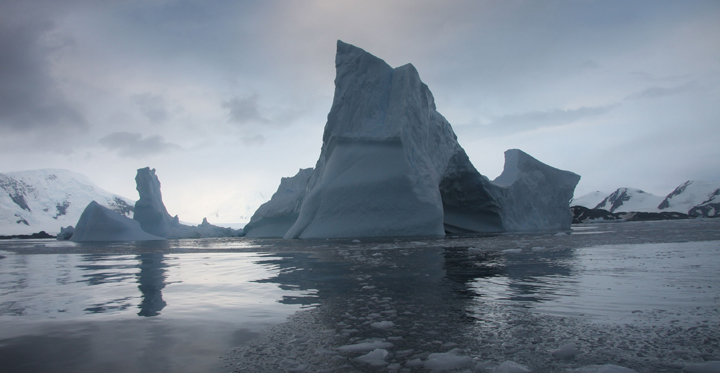Watch the video above: The remnant of the Larsen B ice shelf is likely to disappear by the end of the decade.

TORONTO – A new NASA study has concluded that the Larsen B ice shelf — which first collapsed into the ocean in 2002 — will be no more by the end of the decade.
The study found that the ice shelf is flowing faster, causing fragmentation and large cracks. The glaciers that flow into the ice shelf are also flowing faster and rapidly thinning.
READ MORE: It was T-shirt weather in Antarctica last week
“These are warning signs that the remnant is disintegrating,” Ala Khazendar of NASA’s Jet Propulsion Laboratory, a co-author of the paper, said. “Although it’s fascinating scientifically to have a front-row seat to watch the ice shelf becoming unstable and breaking up, it’s bad news for our planet. This ice shelf has existed for at least 10,000 years, and soon it will be gone.”
The warming temperatures in the region — specifically the west Antarctic — have risen at almost the same rate as in the Arctic according to Ted Scambos, lead scientist at the National Snow and Ice Data Center, at the University of Colorado. It’s that warming, lead by warm winds that travel over the mountains, similar to the Chinooks in Alberta, that causes the pooling of water on the surface. The water can then travel down the cracks in the ice, further weakening the shelf. Another summer of warmth and the shelf could be disastrous for the remaining Larsen B.
“It’s hard to imagine it would survive a warm summer,” Scambos said.
Scambos has also studied the loss of the rapidly disintegrating ice shelf and come to the same conclusion — its loss will be rapid.
“I think it’s going to disintegrate in the next few years. If they say within a decade, they’re being conservative. The next warm summer will see big parts of the remnant Larsen B break away, that’s clear from the imagery. It’s a very compromised.”
Scambos hopes to get a team to the ice shelf to study first-hand the disintegrating ice shelf.
Ice shelves are extremely important features of the Antarctic. They stop melting glacier water from reaching the ocean. Remove them and more of the melt flows into the ocean, potentially causing rising ocean levels.
The remaining Larsen B ice shelf is roughly 1,600 square kilometres and about 500 metres thick at its thickest. Though its loss could inject a further five to 10-billion tonnes of water into the ocean as a result of glacial melt, it wouldn’t significantly rise the ocean levels. But it is this process that scientists are closely monitoring to get a better idea what would happen if a larger one, say the Larsen C or Fimbul ice shelf — both about 25 times bigger — disintegrated.
READ MORE: The big melt: Antarctica’s retreating ice may re-shape earth
As for the seemingly contradictory increase of sea ice extent around Antarctica, Scambos said that scientists are still trying to better understand the processes responsible for the significant growth. But it doesn’t contradict the evidence of climate change.
“Global warming does not necessarily mean that each part of the earth will get slightly warmer evenly. It means that you change the entire system — how the winds blow, how the ocean circulates, what areas are fresher or saltier in the ocean, what areas get more or less rainfall,” he said. “So some combination of those…is leading to an increase in the sea ice fringe around Antarctica while at the same time we’re seeing continued melting.”
“Antarctica is part of the changing planet.”


Comments